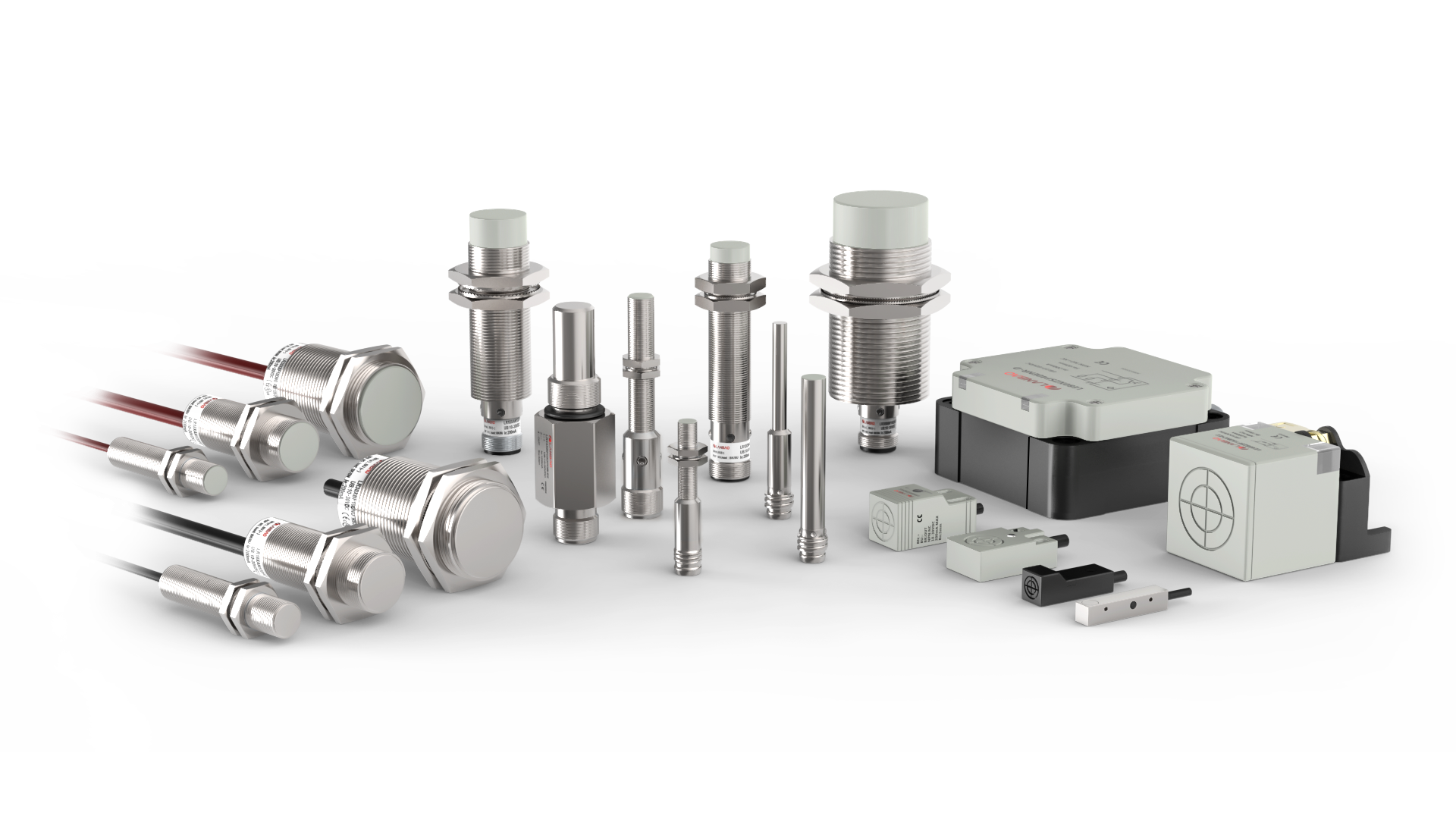For modern industrial applications, inductive sensors for position detection are indispensable. Compared to mechanical switches, they create nearly ideal conditions: contactless detection, no wear, high switching frequency, and high switching accuracy. Moreover, they are insensitive to vibrations, dust, and moisture. Inductive sensors can detect all metals without physical contact. They are also referred to as inductive proximity switches or inductive proximity sensors.
Wide Range of Applications
Inductive sensors are extensively used, particularly for metal component detection and position monitoring. They are especially suitable for industries such as automotive, food processing, and machine tools. Inductive proximity switches can also be deployed in hazardous areas, where NAMUR technology or rugged housing ensures a certain degree of explosion protection.
The sensors’ housing is typically made of nickel-plated brass or stainless steel, with the latter being particularly resistant to high humidity and corrosive environments. Thanks to their robust construction and wear-free operation, these sensors serve as a reliable solution for numerous applications. In environments with welding spatter, inductive sensors can also be equipped with special coatings, such as PTFE (Teflon) or similar materials, for enhanced durability.
Working Principle of Inductive Sensors
Inductive sensors detect metallic objects in a non-contact manner by sensing changes in an electromagnetic field. They operate based on the principle of electromagnetic induction: when a magnetic field fluctuates, it induces an electrical voltage in a conductor.
The sensor's active face emits a high-frequency electromagnetic field. When a metal object approaches, the object disturbs this field, causing detectable changes. The sensor processes this variation and converts it into a discrete switching signal, indicating the object's presence.
Inductive sensors come in various designs, each with different switching distances. A longer sensing range expands the sensor's applicability—particularly useful when direct mounting near the target object is impractical.
In summary, inductive sensors deliver high precision and reliable operation. Their contactless working principle and versatile design options make them indispensable in industrial automation applications.
Diverse designs enable flexible detection
Due to the small measurement tolerance, inductive sensors can ensure reliable detection. The switching distance of inductive sensors varies depending on the design. For instance, the switching distance of large inductive sensors can reach up to 70mm. Inductive sensors come in different installation types: Flush sensors are flush with the installation surface, while non-flush sensors protrude a few millimeters, achieving a greater switching distance.
The detection distance of inductive sensors is affected by the correction coefficient, and the switching distance for metals other than steel is smaller. LANBAO can provide non-attenuated inductive sensors with a correction factor of 1, which have a uniform switching distance for all metals. Inductive sensors are typically used as PNP/NPN normally open or normally closed contacts. Models with analog output can meet more special requirements.
Sturdy and reliable - High protection level suitable for harsh environments
With a wide operating temperature range and high protection level, these sensors are highly suitable for use in harsh industrial environments. Among them, inductive sensors with a protection level of IP68 even have high sealing performance in extreme applications in industries such as food, pharmaceuticals, and construction machinery. Their operating temperature can reach up to 85 °C at most.
The M12 connector ensures simple installation
The M12 connector is the standard interface for connecting sensors because it can ensure quick, simple and accurate installation. LANBAO also offers inductive sensors with cable connections, which are typically installed in applications with limited space. Due to its wide application and high reliability, inductive sensors are important components in modern automation technology and are used in numerous industrial fields.
Post time: Jul-29-2025

